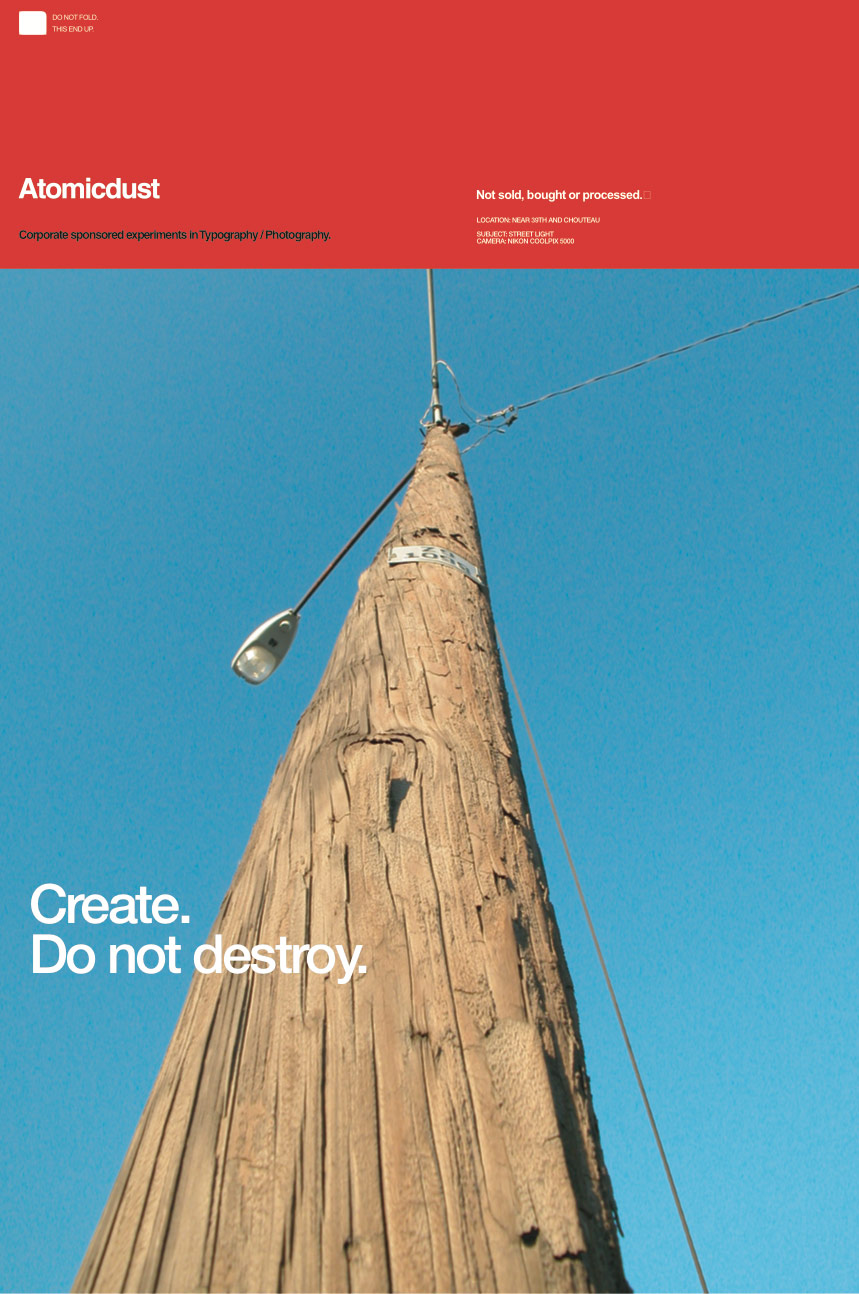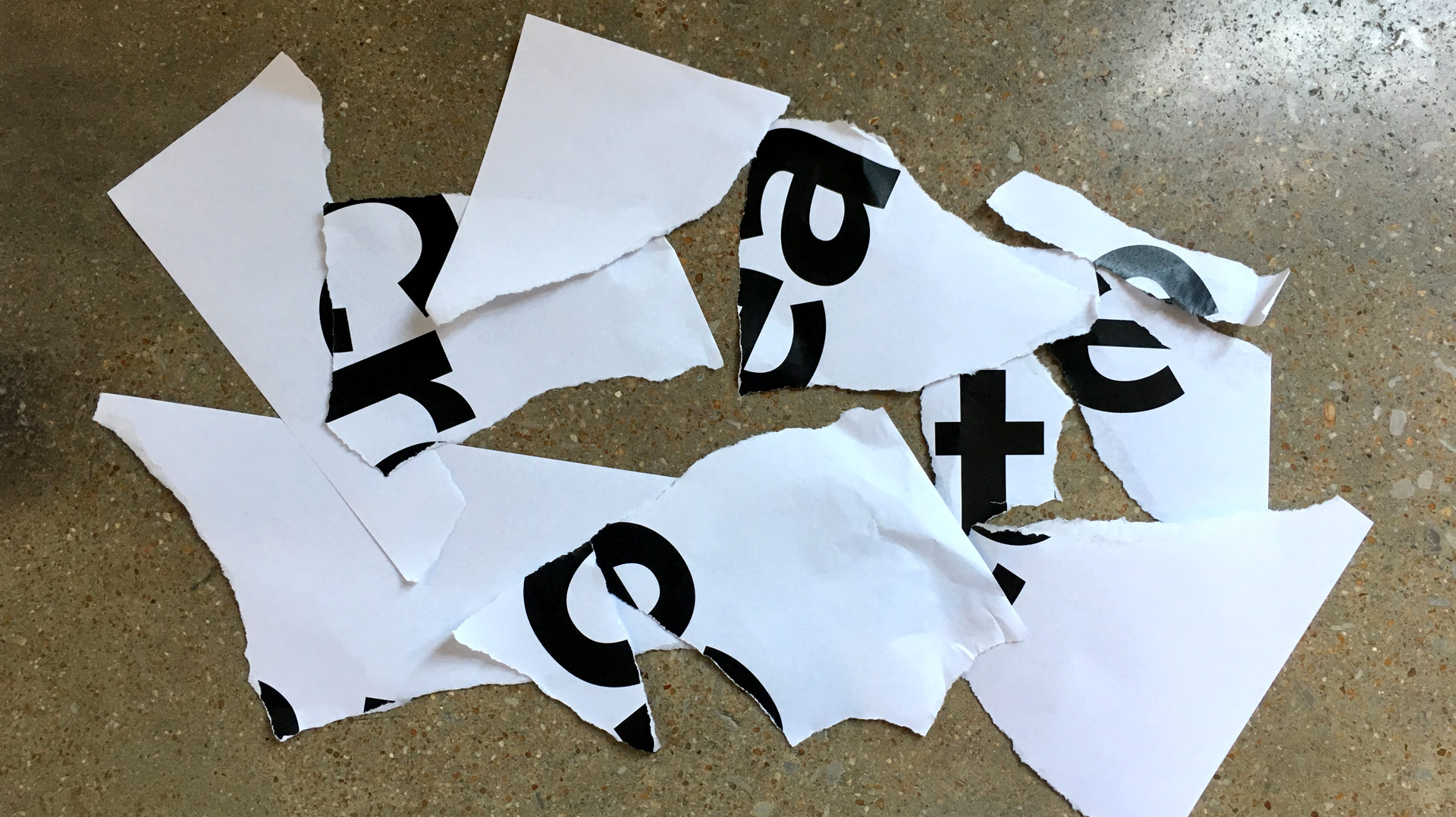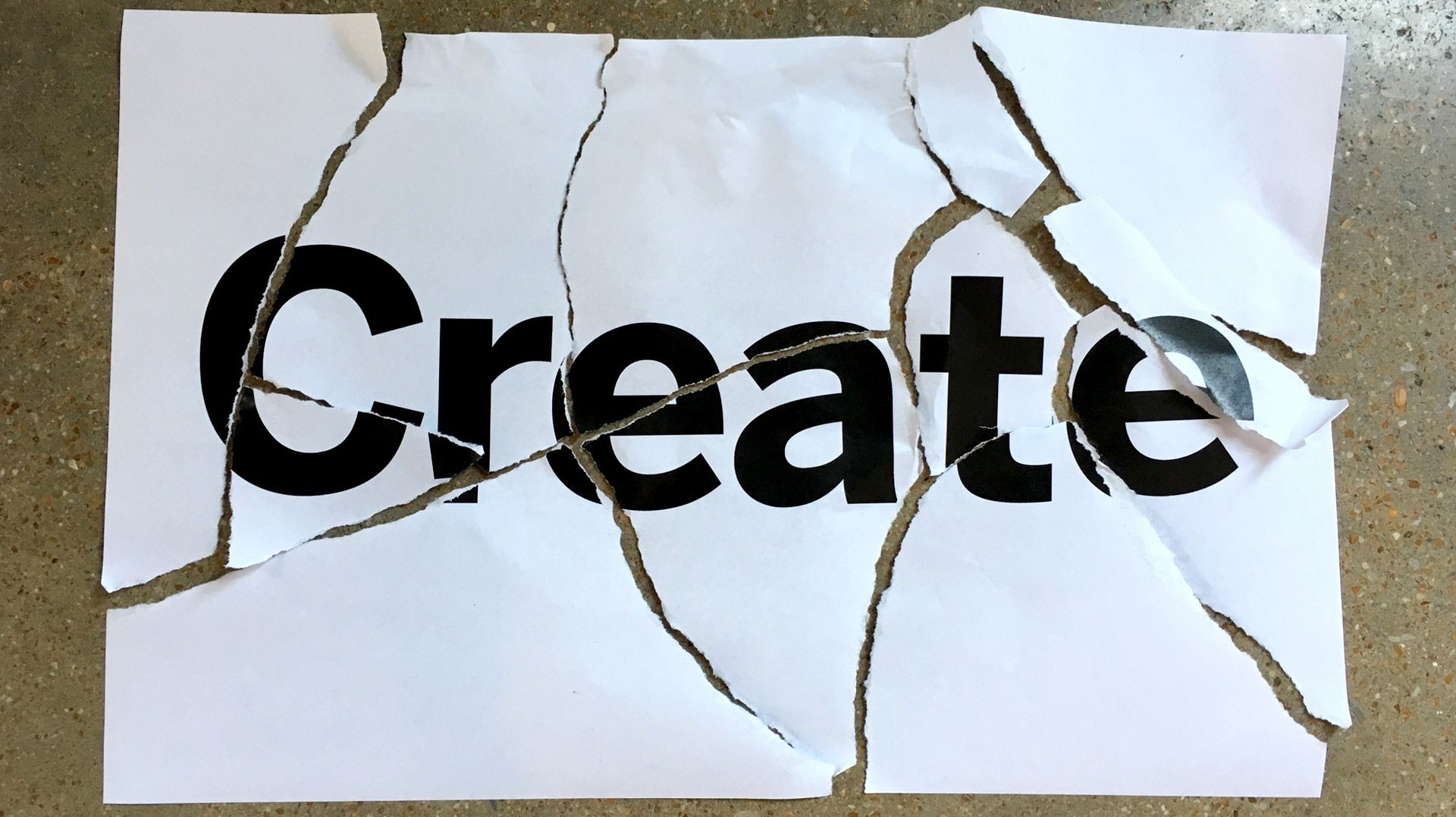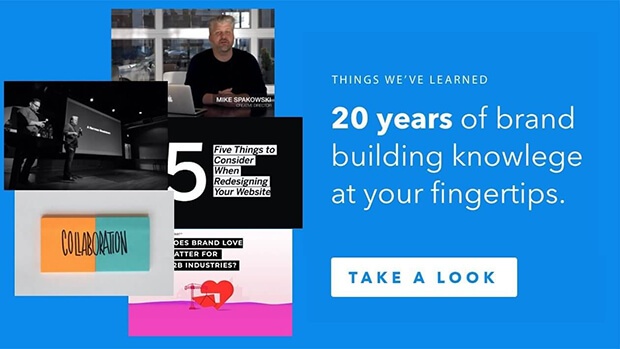It’s a Designer’s Job to Create… and Destroy
I was recently digging through an old hard drive filled with some of my early design work, and I came across this layout. I think it was a poster I was designing for our old office back in 2002. I’ll show it here, and then let’s not talk about it again.

The “Create. Do not destroy.” was my positive, fortune cookie-esque, reminder to contribute new ideas into the world, and do no harm.
I think that’s a pretty positive message for any designer or creator (or any person in general), but lately all I can think about is how it’s not true. Or maybe a better way to put it is that it’s not that accurate. Either way, the whole thing got me thinking.
Destruction in Design
Lately I’m realizing that in order to create something new, you have to destroy what existed in the past.
Sound overly dramatic? Sure. Destruction is a harsh word. It’s extreme. It sounds violent.
Destruction is of course the opposite of a far more positive and well-loved word – creation. Everyone applauds creativity. While destruction is usually met with a cringe. They are completely different, but go hand in hand.
Creation needs destruction. You can’t create without destroying.
An easy example of this is real estate, when someone tears down an old building to make a new one. Or in branding, when the old logos or messaging are replaced with newer versions.
A more abstract example is when someone has a new idea that conflicts with the way things have been done in the past. That could be a company’s business model, its products, or the way it operates. It may even be a common perception. In order for the new idea to live in the world, the old one has to either change or go away completely. It must be destroyed.
Let’s Destroy a Brand… Wait, What?
For the past few months, we’ve been going through our branding program with a client. The brand has been visible in the market for more than 30 years, and the client is ready to see a dramatic change.
But in order to create that change, our job is really to figure out what needs to be destroyed. In the design documentary, Graphic Means, designer and author Carolina de Bartolo says, “Every extension also produces an amputation of some kind. I guess the question just becomes: Is the extension worth the amputation?”
Creation can be the easy part. New ideas are exciting and rampant. It’s the destruction that’s a lot tougher to swallow.
It’s hard, because usually what has existed in the past has worked to some degree. Deciding if something should be destroyed and replaced is where the a lot of the anxiety comes in for designers and strategists. We spend most of our time deciding how we are going to address and break the current negative perceptions of the brand so we can pave the way to create new positive ones.
The decision to start something new is the same as the decision to end something as it currently exists.
Decontruct and Reconstruct
Another, probably better, explanation of this concept is from famed product designer Ayse Birsel. In her workshop-style book, Design the Life You Love: A Step-by-Step Guide to Building a Meaningful Future, Birsel presents the idea of breaking down preconceptions as a means of creating or discovering values. She may be discussing the values to which you live your own meaningful life, but a similar approach can be taken to discover brand values.
Instead of create and destroy, Birsel uses deconstruction and reconstruction. First, you deconstruct an idea, breaking it down to its simplest form and ideals. Then, you reconstruct, shifting your perception to disover a new point of view.
If you have a few minutes, check out Birsel discussing the approach:
In the video, Birsel says that design is imagination. Imagining a new solution, a new idea, a new perspective.
“If you can imagine something, you can make it happen,” Birsel says.
Once you see the potential of an idea, you want to make it happen. And that’s the thing about creation – it’s incredibly exciting.
But first, slow down and ask yourself, what is this replacing? What is this destroying? What must change to make room for this new idea?
The best design – whether it is a redesigned brand or a redesigned perception – takes this into consideration. So, create and destroy. Construct and deconstruct. And then keep creating.




